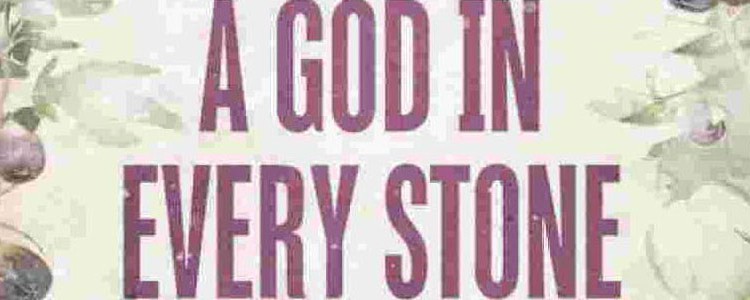Who will win the DSC Prize for South Asian Literature? (13 January 2015)
 According to the vision statement, the DSC Prize for South Asian Literature celebrates the rich and varied world of literature of the South Asian region. Authors could belong to this region through birth or be of any ethnicity but the writing should pertain to the South Asian region in terms of content and theme. The prize brings South Asian writing to a new global audience through a celebration of the achievements of South Asian writers, and aims to raise awareness of South Asian culture around the world. This year the award will be announced on 22 January 2015, at the Jaipur Literature Festival, Diggi Palace, Jaipur.
According to the vision statement, the DSC Prize for South Asian Literature celebrates the rich and varied world of literature of the South Asian region. Authors could belong to this region through birth or be of any ethnicity but the writing should pertain to the South Asian region in terms of content and theme. The prize brings South Asian writing to a new global audience through a celebration of the achievements of South Asian writers, and aims to raise awareness of South Asian culture around the world. This year the award will be announced on 22 January 2015, at the Jaipur Literature Festival, Diggi Palace, Jaipur.
The DSC Prize for South Asian Shortlist 2015 consists of:
1. Bilal Tanweer: The Scatter Here is Too Great (Vintage Books/Random House, India)
2 Jhumpa Lahiri: The Lowland (Vintage Books/Random House, India)
3. Kamila Shamsie: A God in Every Stone (Bloomsbury, India)
4. Romesh Gunesekera: Noontide Toll (Hamish Hamilton/Penguin, India)
5. Shamsur Rahman Faruqi: The Mirror of Beauty (Penguin Books, India)
( http://dscprize.com/global/updates/five-novels-make-shortlist-dsc-prize-2015.html )
The jury consists of Keki Daruwala (Chairperson), John Freeman, Maithree Wickramasinghe, Michael Worton and Razi Ahmed.
All the novels shortlisted for the award are unique. They put the spotlight on South Asian writing talent. From debut novelist ( Bilal Tanweer) to seasoned writers ( Jhumpa Lahiri, Romesh Gunesekera and Kamila Shamsie) and one in translation – Shamsur Rahman Faruqui, the shortlist is a good representation of the spectrum of contemporary South Asian literature in English. Three of the five novelists– Jhumpa Lahiri, Romesh Gunesekera and Kamila Shamsie–reside abroad, representing South Asian diaspora yet infusing their stories with a “foreign perspective”, a fascinating aspect of this shortlist. It probably hails the arrival of South Asian fiction on an international literary map. The three novels — The Lowland, Noontide Toll and A God in Every Stone are firmly set in South Asia but with the style and sophistication evident in international fiction, i.e. detailing a story in a very specific region and time, culturally distinct, yet making it familiar to the contemporary reader by dwelling upon subjects that are of immediate socio-political concern. For instance, The Lowland is ostensibly about the Naxalite movement in West Bengal, India and the displacement it causes in families; A God in Every Stone is about an archaeological dig in Peshawar in the period around World War I and Noontide Toll is about the violent civil unrest between the Sinhala and Tamils in Sri Lanka. Yet all three novels are infused with the writers’ preoccupation with war, the immediate impact it has on a society and the transformation it brings about over time. The literary techniques they use to discuss the ideas that dominate such conversations — a straightforward novel (The Lowland), a bunch of interlinked short stories narrated by a driver ( who is at ease in the Tamil and Sinhala quarters, although his identity is never revealed) and the yoking of historical fiction with creation of a myth as evident in Kamila Shamsie’s A God in Every Stone. All three novelists wear their research lightly, yet these novels fall into the category of eminently readable fiction, where every time the story is read something new is discovered.
Bilal Tanweer who won the Shakti Bhatt First Book Prize 2014 for his wonderful novel, The Scatter Here is Too Great. Set in Karachi, it is about the violence faced on a daily basis. (Obviously there is much more to the story too!) Whereas Shamsur Rahman Faruqi’s novel The Mirror of Beauty, translated by him from Urdu into English is primarily about Begum Wazir Khanam with many other scrumptious details about lifestyles, craftspeople, and different parts of India. It is written in a slow, meandering style of old-fashioned historical fiction. The writer has tried to translocate the Urdu style of writing into the English version and he even “transcreated” the story for his English readers—all fascinating experiments in literary technique, so worth being mentioned on a prestigious literary prize shortlist.
Of all the five novels shortlisted for this award, my bet is on Kamila Shamsie winning the prize. Her novel has set the story in Peshawar in the early twentieth century. The preoccupations of the story are also those of present day AfPak, the commemoration of World War I, but also with the status of Muslims, the idea of war, with accurate historical details such as the presence of Indian soldiers in the Brighton hospital, the non-violent struggle for freedom in Peshawar and the massacre at Qissa Khwani Bazaar. But the true coup de grace is the original creation of Myth of Scylax — to be original in creating a myth, but placing it so effectively in the region to make it seem as if it is an age-old myth, passed on from generation to generation.
13 January 2015




